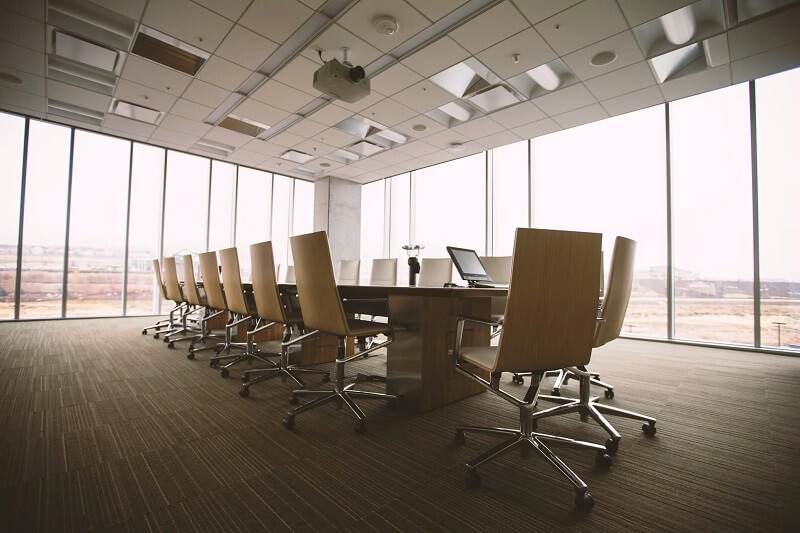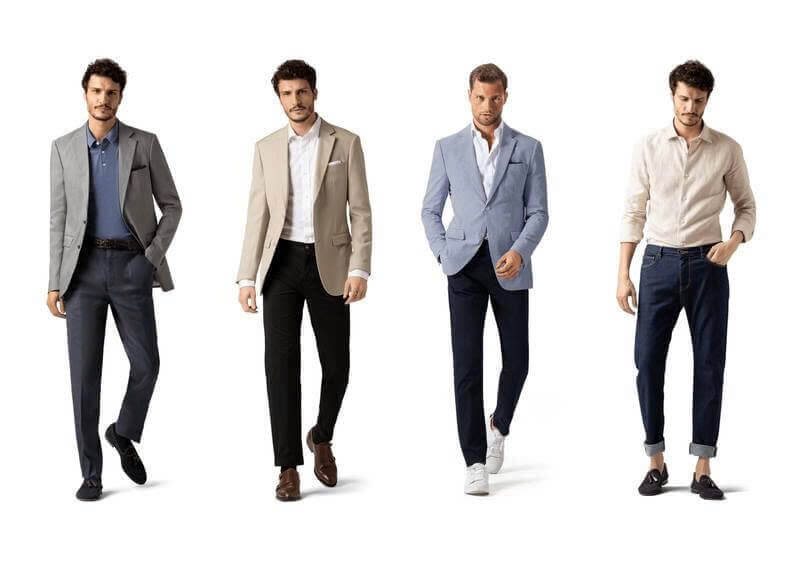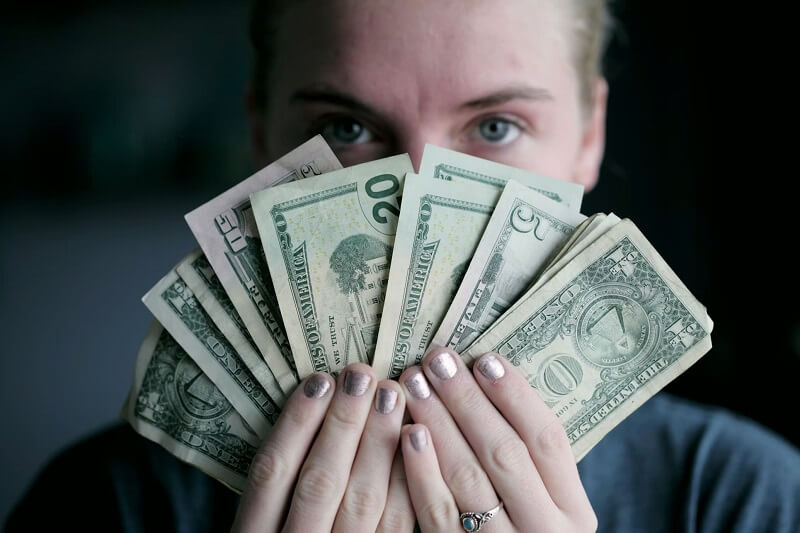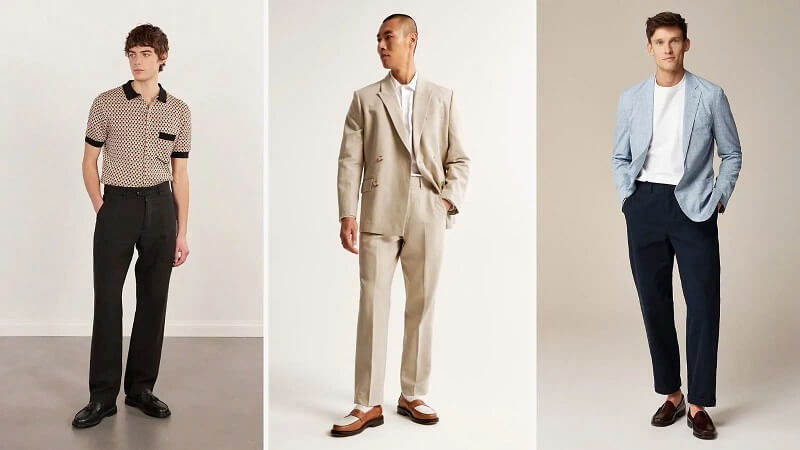Perfect Job Interview Outfits to Impress Employers
When it comes to making a strong impression, choosing the right job interview outfits can significantly impact your success. In this guide, we’ll explore essential styles for men and women, tips on adapting to various interview settings, and how to create a polished look that conveys confidence and professionalism.
1. Why Your Job Interview Outfit Matters
Choosing the right job interview outfit is more than just selecting an outfit; it’s about conveying your best self to potential employers. First impressions are formed within seconds, and wearing appropriate attire shows respect for the company’s culture and the role you’re applying for. A well-chosen outfit demonstrates that you are prepared, professional, and aware of the company's values. By understanding the importance of job interview attire, you are setting a positive tone from the moment you walk into the room.

1.1. Researching the Company Dress Code
Before you decide on your job interview outfits, research the company’s dress code. Corporate environments typically require formal wear, such as suits and ties for men, and blazers or elegant dresses for women. Meanwhile, creative industries or tech startups might lean towards business casual. This research helps you avoid overdressing or underdressing, ensuring your outfit aligns with company expectations.
1.2. Dressing for Confidence and Comfort
Your confidence can be directly impacted by how comfortable you feel in your outfit. Selecting job interview outfits that fit well and are made from comfortable fabrics can help you feel more at ease. For instance, tight or restrictive clothing can cause discomfort, which may affect your focus during the interview. A comfortable, well-fitting outfit allows you to move naturally and keeps the attention on what you’re saying, not on any physical discomfort.
2. Understanding Different Job Interview Outfits for Various Seasons
Interview attire isn’t one-size-fits-all, especially when you consider seasonal variations. Dressing for the season not only shows thoughtfulness but also ensures you remain comfortable throughout the interview. In this section, we’ll explore the best job interview outfits for summer, winter, and transitional seasons.
2.1. Summer Interview Outfits
Dressing professionally in summer can be challenging due to high temperatures, but choosing lightweight fabrics like cotton or linen can help. For women, a knee-length dress paired with closed-toe shoes maintains professionalism while allowing airflow. Men might opt for a light-colored suit or a breathable dress shirt with slacks. Avoid overly casual items like sandals or sleeveless tops, which can come across as unprofessional, regardless of the heat.

2.2. Winter Interview Outfits
In colder months, layering becomes essential. Women can consider wearing a structured blazer over a turtleneck with tailored pants or a skirt, while men might pair a wool blazer with a sweater vest. Opt for darker colors and thicker fabrics that provide warmth without sacrificing professionalism. Ensure outerwear such as coats or scarves are also neat and professional, as they contribute to the first impression when you arrive.
2.3. Transitional Season Tips
Spring and fall bring fluctuating weather, which can be tricky for interview attire. Versatile options, such as a blazer that can be removed or added depending on the temperature, are ideal. Women can layer a blouse under a cardigan or lightweight jacket, while men might choose a suit jacket that works well in both cool and warm settings. Focus on adaptable clothing items to help you stay comfortable regardless of sudden weather changes.
3. Gender-Specific Job Interview Outfits and Styling Tips
While some elements of interview attire are universal, gender-specific choices can add a tailored touch to your presentation. Here, we’ll delve into recommended job interview outfits for both men and women, ensuring you feel confident and professional.
3.1. Job Interview Outfits for Women
Women have a variety of options, from tailored suits to dresses, depending on the industry. For formal roles, a pantsuit or a knee-length skirt suit in neutral colors is often the best choice. Accessories should be kept simple—think stud earrings or a classic watch—to avoid distractions. Shoes should be closed-toe, with a moderate heel height for a balanced look.
3.2. Job Interview Outfits for Men
For men, a suit remains the gold standard in many formal settings. Choose a classic color like navy or charcoal, pairing it with a dress shirt and a conservative tie. Polished shoes complete the look. In less formal industries, business casual attire—such as a dress shirt with slacks—may be appropriate, but avoid overly casual items like polo shirts or loafers.
4. Accessorizing Your Job Interview Outfit
Accessories play a subtle yet powerful role in completing your job interview outfit. When chosen thoughtfully, they can enhance your appearance without distracting from your professional demeanor. Here, we explore how to use accessories effectively.
4.1. Choosing the Right Jewelry
For both men and women, jewelry should be minimal and unobtrusive. Women might opt for small earrings or a delicate bracelet, while men can choose a classic watch. Avoid large or flashy pieces that might draw attention away from the conversation. The goal is to add a touch of elegance that complements, rather than competes with, your outfit.
4.2. Footwear Selection
Your choice of footwear is just as important as the rest of your outfit. Women should stick with closed-toe shoes, ideally in neutral colors that match the outfit. Heels are acceptable if kept at a moderate height. For men, polished dress shoes in dark colors, such as black or brown, are ideal. Avoid casual shoes like sneakers, as they may undermine the professional look you are aiming for.

4.3. Choosing a Professional Bag
A neat and organized bag not only completes your outfit but also serves a practical purpose during the interview. Choose a structured bag that can hold necessary documents, a notebook, and a pen. For women, a leather tote or a sleek handbag works well, while men can opt for a portfolio or a simple briefcase. Avoid large, casual bags that may seem unprofessional or cluttered.
5. Avoiding Common Job Interview Outfit Mistakes
Even with the best intentions, some outfit choices can detract from the professional impression you wish to convey. Let’s discuss a few common mistakes in choosing job interview outfits and how to avoid them.
5.1. Wearing Overly Casual Attire
One of the biggest mistakes candidates make is dressing too casually for an interview. Even in a relaxed industry, items like jeans, T-shirts, and sneakers should be avoided unless explicitly recommended by the employer. Aim for business casual at a minimum, which includes a dress shirt or blouse with slacks or a skirt. This approach shows that you take the opportunity seriously, no matter the dress code.
5.2. Ignoring Personal Grooming
Your job interview outfit is only part of the first impression; personal grooming also plays a significant role. Ensure that your hair is neatly styled, nails are clean, and any perfume or cologne is subtle. Men should be clean-shaven or have neatly trimmed facial hair. This attention to grooming demonstrates your attention to detail and respect for the interview setting.

5.3. Choosing Distracting Colors or Patterns
Bold colors and patterns can be visually distracting, shifting focus away from your qualifications. Stick to neutral colors such as black, navy, gray, or beige, which convey professionalism and are less likely to clash with other elements. If you wish to add a touch of personality, use subtle accessories rather than clothing with loud patterns.
6. Dressing for Specific Job Sectors
Different industries may have varying expectations for interview attire. Adapting your job interview outfit to align with the industry shows awareness and respect for the field’s norms. Here are tailored outfit suggestions for common job sectors.
6.1. Corporate and Finance Sectors
In highly formal industries like finance or law, traditional professional attire is expected. Men should wear a dark suit with a conservative tie, while women can opt for a pantsuit or skirt suit in neutral tones. Accessories should be minimal, and footwear should be polished and closed-toe. This level of formality demonstrates that you are serious about your role and ready to fit into a structured environment.
6.2. Creative Industries
Creative fields, such as design, media, and marketing, typically allow for more flexibility and self-expression in attire. While you should still look polished, adding a splash of color or interesting accessory can reflect your creativity. For example, men might choose a patterned tie, and women could wear a stylish blouse under a blazer. However, avoid anything too flamboyant that could overshadow your professionalism.
6.3. Technology and Start-Ups
Tech companies and startups are often known for their casual dress codes. Business casual is usually acceptable, and sometimes even jeans and a neat shirt may work. However, it’s best to stay on the professional side, especially if you are unsure about the specific dress code. Men can opt for a collared shirt with chinos, while women might choose a smart blouse with tailored pants.
For tech jobs, specifically, adapting to the company's culture while maintaining a clean, professional look will reflect your versatility and respect for the environment.
7. Preparing Your Job Interview Outfit in Advance
To avoid last-minute stress, preparing your job interview outfit ahead of time is crucial. From ensuring the fit is right to checking for any stains or wrinkles, a bit of prep work goes a long way in helping you feel confident on the day of the interview.
7.1. Check the Fit
A poorly fitting outfit can detract from your appearance and make you feel uncomfortable. Make sure to try on your chosen attire at least a day before the interview to confirm it fits well. Women should ensure skirts are an appropriate length when seated, while men should check that their suit jacket is neither too tight nor too loose. Tailoring adjustments, if necessary, should be made in advance to ensure everything looks polished.
7.2. Prepare Backup Options

Unexpected issues, such as spills or last-minute wardrobe malfunctions, can happen. Having a backup job interview outfit ready can save you from unnecessary stress. This backup doesn’t have to be an entirely new outfit but could include an extra shirt, tie, or pair of stockings in case of an emergency. Remember, your goal is to present yourself as a prepared, thoughtful candidate, increasing your chances of receiving a job offer letter following a successful interview.
7.3. Iron and Clean Your Outfit
Wrinkles and stains can quickly ruin an otherwise perfect job interview outfit. Take the time to iron your clothing and ensure it is spotless. If your attire has been in storage, consider having it dry-cleaned. Fresh, wrinkle-free clothing gives a crisp, professional appearance and shows attention to detail.
8. Common Questions About Job Interview Outfits
Candidates often have questions about what’s appropriate to wear to an interview. Addressing these common concerns can help ensure that your job interview outfit is suitable and makes a positive impression.
8.1. Should You Wear a Suit to Every Interview?
While suits are typically seen as the gold standard for formal attire, they aren’t always necessary for every interview. In some industries, a business casual outfit can be equally appropriate. When in doubt, it’s safer to dress slightly more formal than the company’s usual attire. For instance, if business casual is the norm, a smart blazer and slacks can add a professional touch without appearing overdressed.
8.2. How Important Are Colors in an Interview Attire?
Colors can convey different messages, so it’s essential to choose them thoughtfully. Neutral colors like black, navy, and gray are generally safe choices, as they exude professionalism and are less distracting. However, a subtle pop of color in a tie, scarf, or accessory can show personality without detracting from a polished look. Avoid overly bright colors or loud patterns that may come across as unprofessional.
8.3. Can You Wear Accessories?
Accessories should be kept minimal to avoid drawing attention away from your qualifications. A simple watch, understated jewelry, or a classic belt can add a finishing touch to your job interview outfit without being overwhelming. Ensure that accessories complement, rather than compete with, your overall look.
9. Final Preparations and Confidence Boosters
Your job interview outfit is just one part of the overall impression, but the way you feel in your outfit plays a significant role in your confidence. Let’s go over a few final preparations that can help you enter the interview room feeling calm and collected.
9.1. Practice Your Posture
Good posture not only improves the fit of your clothing but also exudes confidence. Stand tall, keep your shoulders back, and avoid crossing your arms during the interview. Practicing posture before the interview can ensure your outfit looks its best while also projecting self-assurance.
9.2. Prepare a Confidence-Boosting Routine
Having a routine can help calm nerves and focus your mind before an interview. Consider a quick practice session in front of the mirror, where you check your job interview outfit, smile, and run through some answers. Small actions like these can set a positive tone and remind you of your preparation and readiness.
9.3. Double-Check Your Appearance
Right before heading into the interview, take a moment to double-check your appearance. Make sure your job interview outfit is wrinkle-free, shoes are polished, and accessories are in place. A quick look in the mirror to smooth your hair or adjust your tie can be the final touch to a perfectly polished look.
10. Final Thoughts on Job Interview Outfits
The impression you create through your job interview outfit can greatly impact how potential employers perceive you. A well-thought-out outfit shows that you are serious about the role and that you respect the company’s culture. Here’s a final recap to keep in mind as you choose your interview attire.
10.1. Prioritize Professionalism and Comfort
The most successful job interview outfits strike a balance between professionalism and personal comfort. While it’s essential to look polished, feeling at ease in your attire will allow you to present yourself more confidently. Choose fabrics that fit well, avoid anything too restrictive, and make sure that your outfit aligns with the level of formality expected in your industry.
10.2. Reflect the Company’s Values
Understanding and reflecting a company’s values through your attire demonstrates awareness and respect for the workplace culture. If you’re interviewing with a traditional company, opt for formal attire. For more creative or casual industries, you can incorporate subtle personal touches, but always maintain a professional appearance.
10.3. Leave a Positive, Lasting Impression
Your job interview outfit is a part of the overall impression you leave behind. When your attire reflects attention to detail and respect for the interview process, it reinforces the qualities that employers are seeking. Ensure your outfit is clean, neatly pressed, and thoughtfully accessorized. This attention to detail can leave a lasting, positive impact that sets you apart from other candidates.
- Essential Job Description Supervisor Guide for Success
- Essential Job Description Sales Guide for Success
- Job Description Restaurant Manager – Roles & Skills
- Understanding the job description project coordinator role
- Job Description HR Assistant—Roles and Responsibilities
- Essential Guide to Job Description COO
- Comprehensive Job Description Admin Assistant Insights
- A Comprehensive and In-Depth Job Description for HR Generalist
- Comprehensive Guide: Job Description Executive Chef
- Top 5 Best Job Search Sites for Easy Job Applications
- QA Job Description: Key Skills and Roles in 2025
- The Complete Clerk Job Description Guide
- What Is Your Greatest Weakness? Mastering the Answer
- Master the Phone Interview for Career Success
- Crafting the Perfect CV Personal Statement
- What is a Job Description Warehouse Worker?
- Detailed job description teller bank for career growth
- Comprehensive Job Description Store Manager Guide
- Comprehensive Guide to Job Description Personal Assistant
- Comprehensive Guide to Job Description Nursing Assistant
- Comprehensive Job Description Graphic Designer Guide
- Comprehensive Job Description Chief of Staff Guide
- Comprehensive Job Description Cleaner Guide
- Comprehensive Job Description Assistant Manager
- Comprehensive Guide to Job Description Account Executive
- Comprehensive Guide to Secretary Job Description
- Comprehensive Job Description of Teaching Assistant
- Comprehensive Job Description for a Social Media Manager
- Mastering STAR Interview Techniques: The Ultimate Guide
- “I Hate My Job” – What You Should Do Next
- What Is a Job Description Team Leader?
- A Complete Guide to Job Description Sales Assistant
- Comprehensive Job Description for Security Guards
- Detailed Job Description for HR Manager
- The Ultimate Guide to Job Description Medical Assistant
- Job Description Housekeeping: Key Roles & Responsibilities
- Job Description Merchandiser: Key Roles & Skills
- Job Description Product Manager: Roles and Responsibilities
- Job Description Account Manager: Roles and Responsibilities
- Job Description Marketing Manager: Roles & Skills
- Job Description HR: The Essential Guide for HR Professionals
- Best Jobs for Introverts: Top Careers for Quiet Thinkers
- What is Your Greatest Strength? How to Answer Effectively
- Job Description Data Entry Guide
- Detailed Job Description Sales Manager Guide
- The Importance of Work Experience on a Resume
- Comprehensive Job Description Sales Representative Insights
- Comprehensive Job Description of Project Manager
- Job Description Executive Assistant: Key Responsibilities
- Job Description for Sales Executive: Key Roles and Skills
- Job Description Customer Service Roles
- Job Description Business Analyst: Roles and Skills
- Comprehensive Job Description for a Receptionist
- Mastering the Sales Associate Job Description
- Understanding Accountant Job Description in Detail
- Hard Skills vs Soft Skills: Key Differences and Examples
- Why Do You Want to Work Here? Best Answer and Examples
- How to Decline a Job Offer Politely and Gracefully
- Comprehensive Job Description of Waitress
- Job Description Cashier: Key Responsibilities and Skills
- Where Do You See Yourself in 5 Years?
- Mastering Problem Solving Skills for Career Success
- Effective Job Description Sample Guide
- Behavioral Interview Questions Guide
- Comprehensive Job Description for an Administrative Assistant
- Essential Job Titles for Career Success
- Master Leadership Skills for Effective Management
- How to Write a Perfect Motivational Letter
- CV vs Resume: Understanding the Key Differences
- Top Reasons for Leaving a Job Today
- What Is a Resignation Letter? Key Details You Must Know
- How to Write a Perfect Job Application
